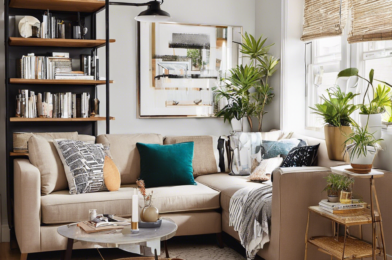Taking on home improvement projects can be an exciting and rewarding endeavor for any ambitious homeowner. Whether you’re looking to tackle simple repairs or embark on more ambitious renovations, having the right tools at your disposal is essential. So, what does a DIY homeowner need in their arsenal to get the job done safely and effectively?
First and foremost, every homeowner should invest in a good set of hand tools. This includes items such as a hammer, screwdrivers, wrenches, pliers, and a utility knife. Having a variety of hand tools allows you to tackle everything from hanging pictures to tightening loose cabinet hardware. It is also worthwhile to purchase a sturdy tool bag or box to keep everything organized and protected. This will enable you to quickly reach for your tape measure or level when needed.
Power tools are another essential for the DIY enthusiast. A drill is a must-have for any homeowner. It allows you to quickly and easily hang curtains, assemble furniture, or tackle more complex projects like building a deck. Investing in a quality drill with a range of bits and attachments will serve you well across numerous projects. In addition to a drill, a jigsaw, circular saw, and sander are worthwhile additions to your toolbox, enabling you to cut and shape wood with precision.
Safety gear is also of utmost importance when taking on any home improvement task. Protective eyewear, ear protection, and a respirator are essential to shield yourself from debris, dust, and loud noises. A sturdy pair of work gloves will protect your hands from cuts and splinters, while a durable tool belt will keep your tools close at hand and prevent trips and falls.
With the right tools and a little know-how, there’s no limit to what you can accomplish around your home. So, take the time to invest in quality equipment and familiarize yourself with their proper use. Whether you’re a seasoned pro or a novice DIY-er, the satisfaction of completing a project with your own two hands is truly unparalleled. So, roll up your sleeves, grab your toolbox, and get ready to transform your house into the home of your dreams!
In addition to the essentials mentioned above, there are a few other tools that can be incredibly useful for homeowners. A putty knife and a variety of sanding blocks and paper come in handy for patching holes and smoothing surfaces. A caulking gun and caulk are also worthwhile investments, as they can be used to seal gaps and cracks, improving the energy efficiency of your home and preventing unwanted drafts. These tools will enable you to make quick repairs and maintain the integrity of your home’s structure.
For those with larger outdoor spaces or a penchant for gardening, landscaping tools are a must. A rake, shovel, and gardening shears will prove invaluable for maintaining your yard and creating a beautiful outdoor oasis. Additionally, a wheelbarrow or garden cart will save your back and make transporting soil, plants, and other materials a breeze. If you’re looking to tackle more complex landscaping projects, consider investing in a rototiller to break up compacted soil and prepare planting beds.
When it comes to reaching higher areas safely, a sturdy step ladder is a must-have for any homeowner. Whether you need to change a lightbulb, paint a tall wall, or retrieve items from upper cabinets, a step ladder provides a stable and secure platform to work from. Opt for a model with a wide base and a weight capacity that exceeds your needs to ensure optimal stability. Some step ladders also feature a built-in tray or shelf, providing a convenient space to keep tools or paint cans close at hand while you work.
Last but certainly not least, every DIY homeowner should have a well-stocked first aid kit. Accidents can happen, and it’s important to be prepared to handle minor injuries promptly and effectively. Your first aid kit should include items such as bandages, gauze, antiseptic wipes, and a pair of medical scissors. It’s also a good idea to include any personal medications or specialized items based on your specific needs. Keep your kit easily accessible and ensure all household members know its location.









